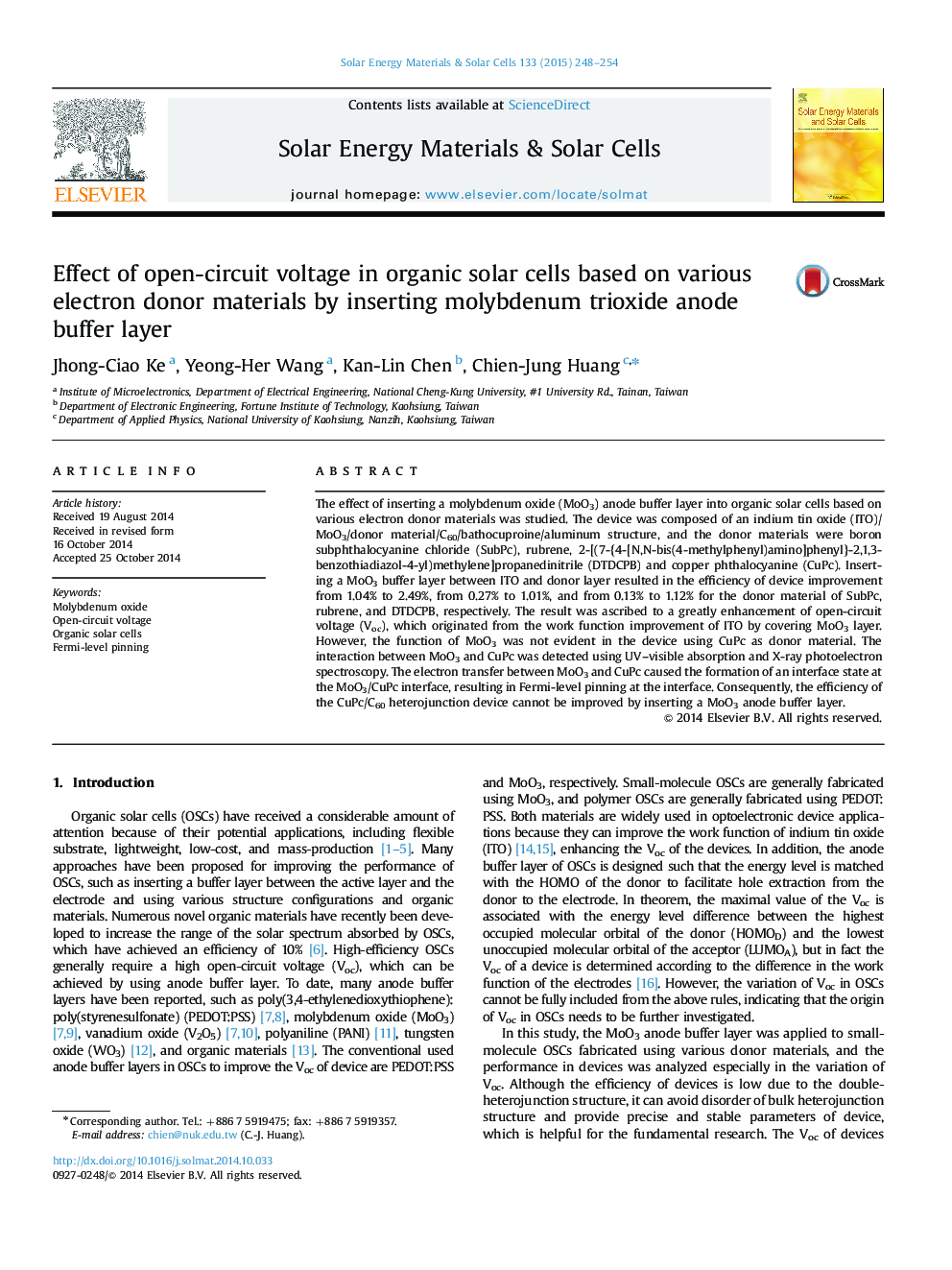| کد مقاله | کد نشریه | سال انتشار | مقاله انگلیسی | نسخه تمام متن |
|---|---|---|---|---|
| 6535329 | 49308 | 2015 | 7 صفحه PDF | دانلود رایگان |
عنوان انگلیسی مقاله ISI
Effect of open-circuit voltage in organic solar cells based on various electron donor materials by inserting molybdenum trioxide anode buffer layer
ترجمه فارسی عنوان
تأثیر ولتاژ مدار باز در سلولهای خورشیدی آلی بر اساس مواد مختلف تکمیل کننده الکترون با قرار دادن لایه بافر مولکولی
دانلود مقاله + سفارش ترجمه
دانلود مقاله ISI انگلیسی
رایگان برای ایرانیان
کلمات کلیدی
موضوعات مرتبط
مهندسی و علوم پایه
مهندسی شیمی
کاتالیزور
چکیده انگلیسی
The effect of inserting a molybdenum oxide (MoO3) anode buffer layer into organic solar cells based on various electron donor materials was studied. The device was composed of an indium tin oxide (ITO)/MoO3/donor material/C60/bathocuproine/aluminum structure, and the donor materials were boron subphthalocyanine chloride (SubPc), rubrene, 2-[(7-{4-[N,N-bis(4-methylphenyl)amino]phenyl}-2,1,3-benzothiadiazol-4-yl)methylene]propanedinitrile (DTDCPB) and copper phthalocyanine (CuPc). Inserting a MoO3 buffer layer between ITO and donor layer resulted in the efficiency of device improvement from 1.04% to 2.49%, from 0.27% to 1.01%, and from 0.13% to 1.12% for the donor material of SubPc, rubrene, and DTDCPB, respectively. The result was ascribed to a greatly enhancement of open-circuit voltage (Voc), which originated from the work function improvement of ITO by covering MoO3 layer. However, the function of MoO3 was not evident in the device using CuPc as donor material. The interaction between MoO3 and CuPc was detected using UV-visible absorption and X-ray photoelectron spectroscopy. The electron transfer between MoO3 and CuPc caused the formation of an interface state at the MoO3/CuPc interface, resulting in Fermi-level pinning at the interface. Consequently, the efficiency of the CuPc/C60 heterojunction device cannot be improved by inserting a MoO3 anode buffer layer.
ناشر
Database: Elsevier - ScienceDirect (ساینس دایرکت)
Journal: Solar Energy Materials and Solar Cells - Volume 133, February 2015, Pages 248-254
Journal: Solar Energy Materials and Solar Cells - Volume 133, February 2015, Pages 248-254
نویسندگان
Jhong-Ciao Ke, Yeong-Her Wang, Kan-Lin Chen, Chien-Jung Huang,
